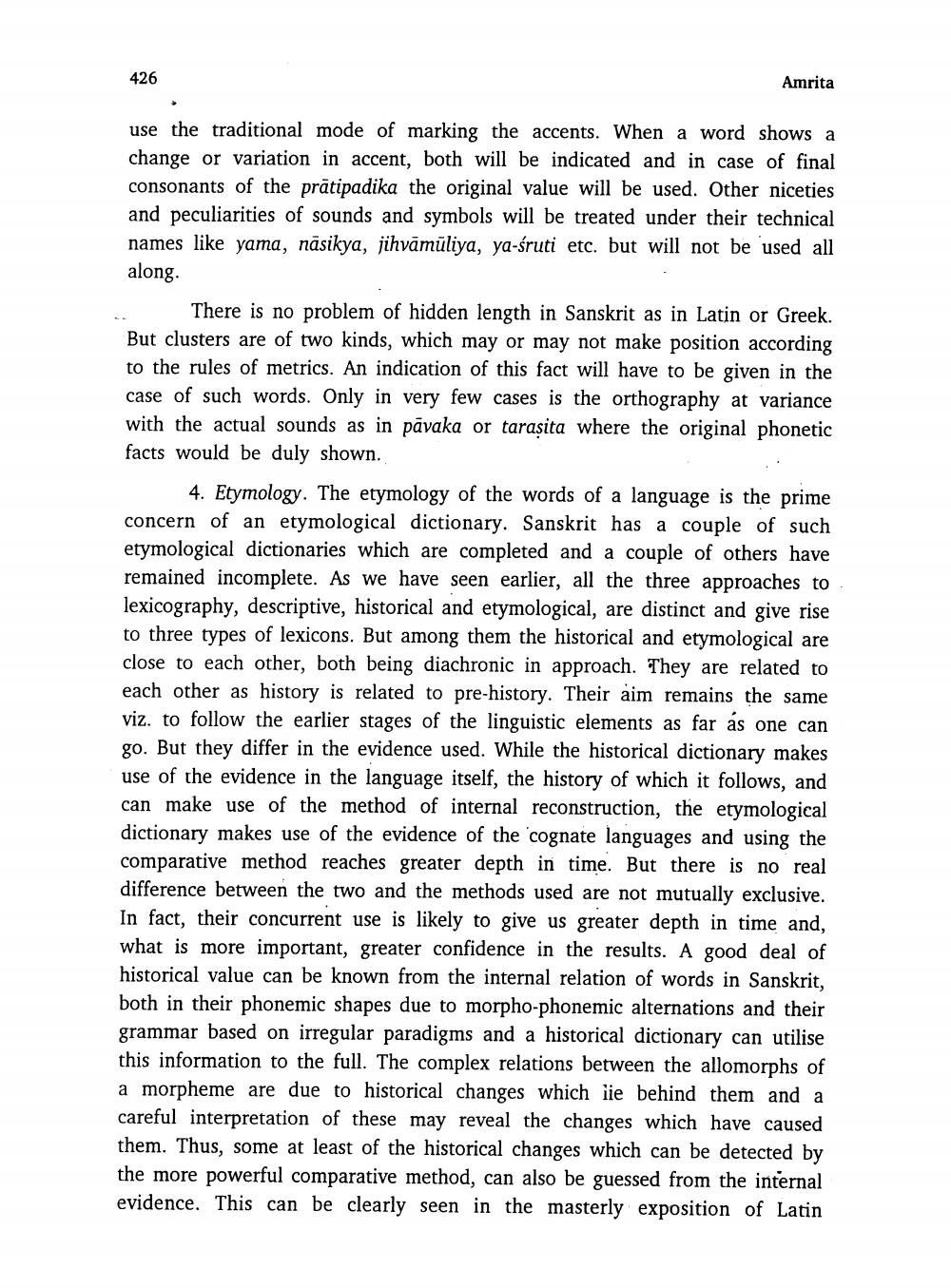________________
426
Amrita
use the traditional mode of marking the accents. When a word shows a change or variation in accent, both will be indicated and in case of final consonants of the prātipadika the original value will be used. Other niceties and peculiarities of sounds and symbols will be treated under their technical names like yama, nāsikya, jihvāmüliya, ya-śruti etc. but will not be used all along.
There is no problem of hidden length in Sanskrit as in Latin or Greek. But clusters are of two kinds, which may or may not make position according to the rules of metrics. An indication of this fact will have to be given in the case of such words. Only in very few cases is the orthography at variance with the actual sounds as in pāvaka or tarasita where the original phonetic facts would be duly shown.
4. Etymology. The etymology of the words of a language is the prime concern of an etymological dictionary. Sanskrit has a couple of such etymological dictionaries which are completed and a couple of others have remained incomplete. As we have seen earlier, all the three approaches to lexicography, descriptive, historical and etymological, are distinct and give rise to three types of lexicons. But among them the historical and etymological are close to each other, both being diachronic in approach. They are related to each other as history is related to pre-history. Their aim remains the same viz. to follow the earlier stages of the linguistic elements as far as one can go. But they differ in the evidence used. While the historical dictionary makes use of the evidence in the language itself, the history of which it follows, and can make use of the method of internal reconstruction, the etymological dictionary makes use of the evidence of the 'cognate languages and using the comparative method reaches greater depth in time. But there is no real difference between the two and the methods used are not mutually exclusive. In fact, their concurrent use is likely to give us greater depth in time and, what is more important, greater confidence in the results. A good deal of historical value can be known from the internal relation of words in Sanskrit, both in their phonemic shapes due to morpho-phonemic alternations and their grammar based on irregular paradigms and a historical dictionary can utilise this information to the full. The complex relations between the allomorphs of a morpheme are due to historical changes which lie behind them and a careful interpretation of these may reveal the changes which have caused them. Thus, some at least of the historical changes which can be detected by the more powerful comparative method, can also be guessed from the internal evidence. This can be clearly seen in the masterly exposition of Latin




